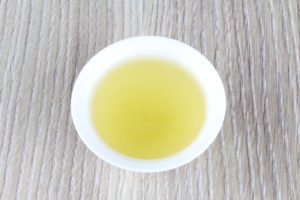Asamushicha (浅蒸し茶, light-steamed tea) is a type of green tea that is steamed for a lower time than normal.
Steaming is the preferred way of stopping the oxidation of the tea leaves in Japan.
Green tea is a minimally oxidized, so the steaming process is normally done as soon as possible after harvesting the tea leaves.
Asamushicha has a steaming time of 30 seconds or less, while fukamushicha (deep-steamed tea) is steamed for a minute or more.
Steaming plays an important role in the appearance, aroma and taste of green tea.
Characteristics of asamushi sencha
Most often than not, the light steamed green teas are sencha.
This type of tea has leaves that are almost intact, in contrast to fukamushi sencha where the tea leaves are so fragile that they’re usually broken.
Hence, the best appearance for tea leaves is often achieved with a short steaming time.
Once infused, asamushi sencha has a light yellow and clear color.
On the other hand, a deep-steamed tea has an intense green color without much transparency.
Another aspect is that the aroma is more intense if the steaming time is lowered.
Finally, astringency is higher in light-steamed teas. They feel more refreshing as a result.
How to prepare asamushi sencha
This tea is prepared in the same manner as a normal sencha, but for a longer time.
1 teaspoon of tea leaves, for 60 ml (2 oz) of water at 80 ºC (176ºF), for a minute and a half.
In my experience, light-steamed teas aren’t as common as normal and deep-steamed teas.
Although things might have changed now. It’s been years since I last traveled to Japan.





